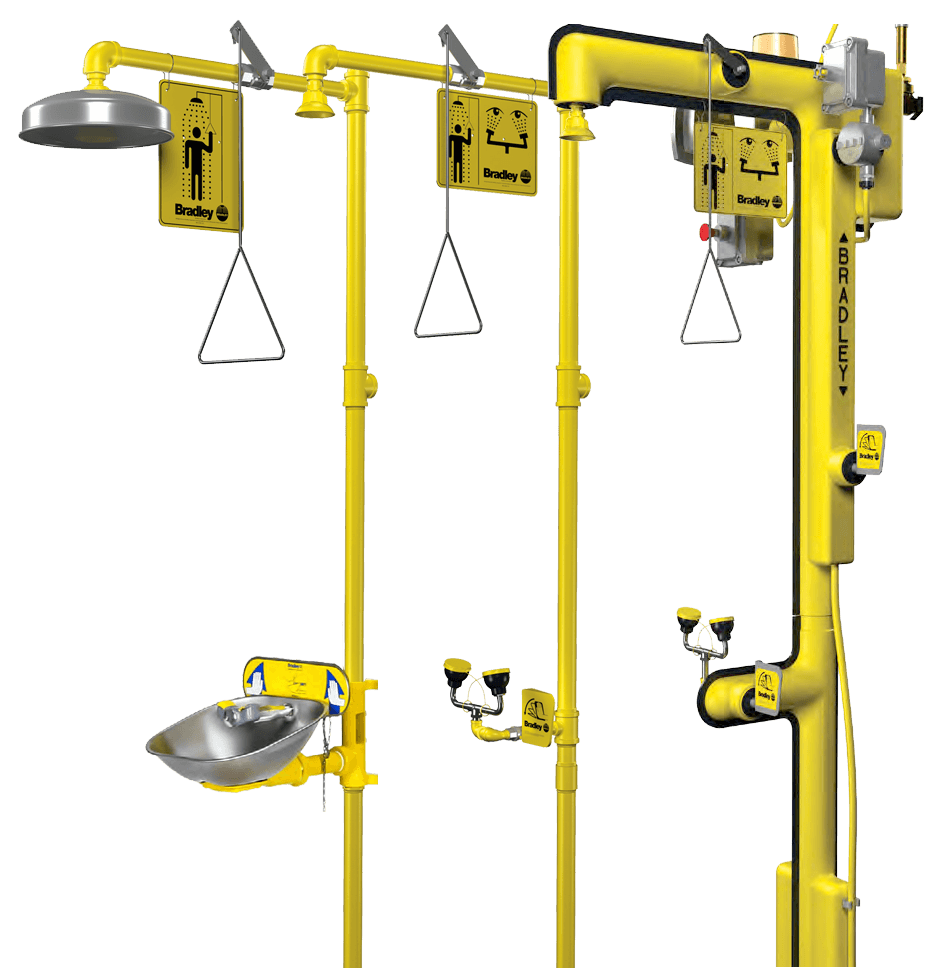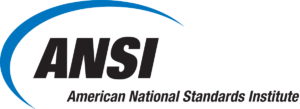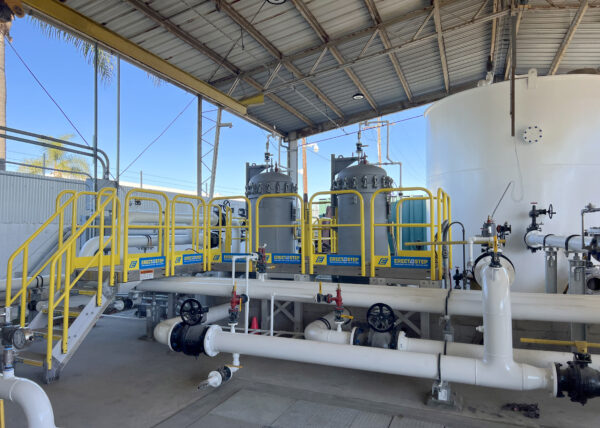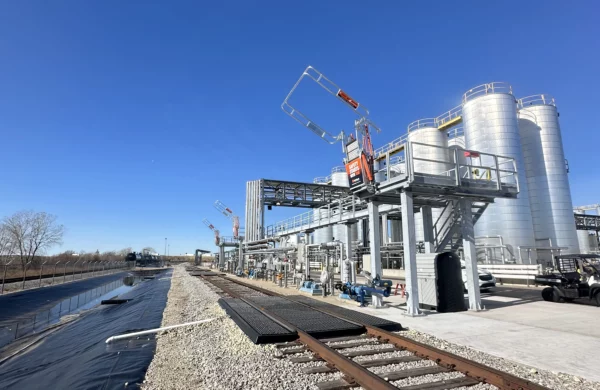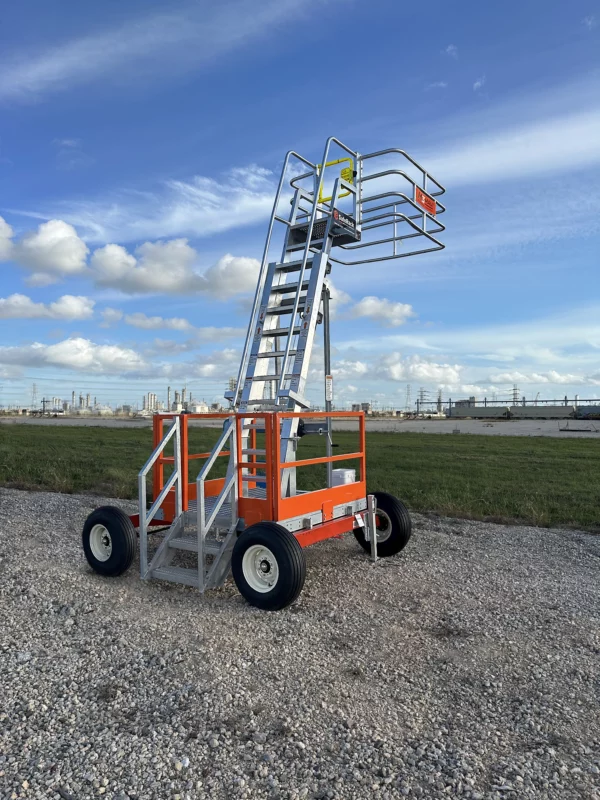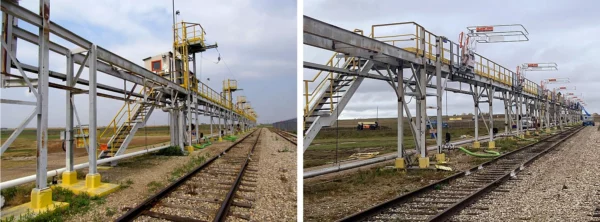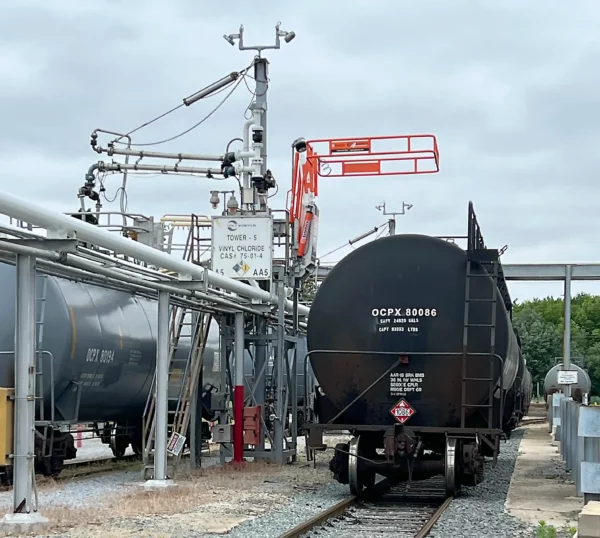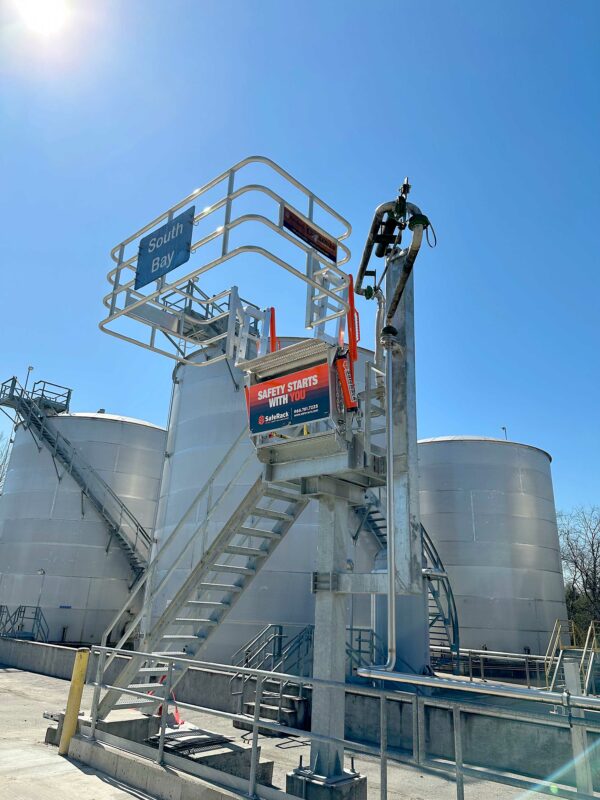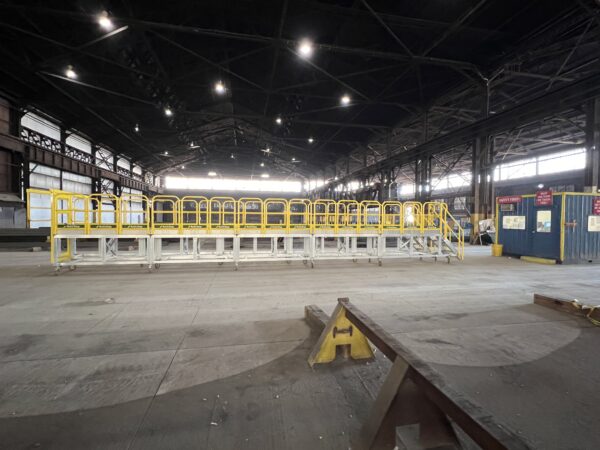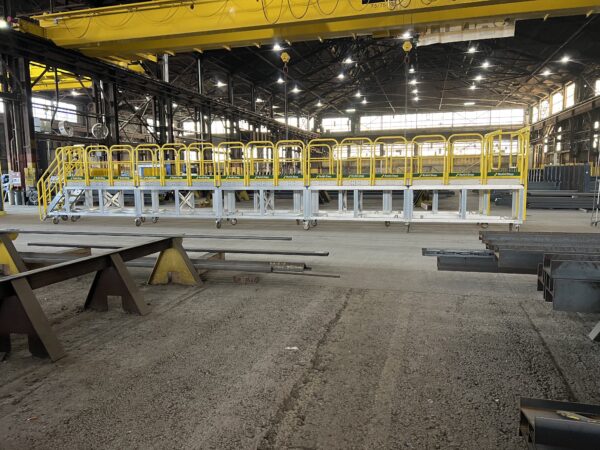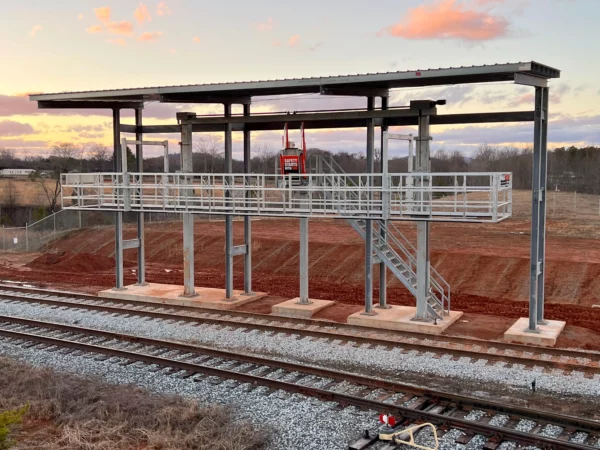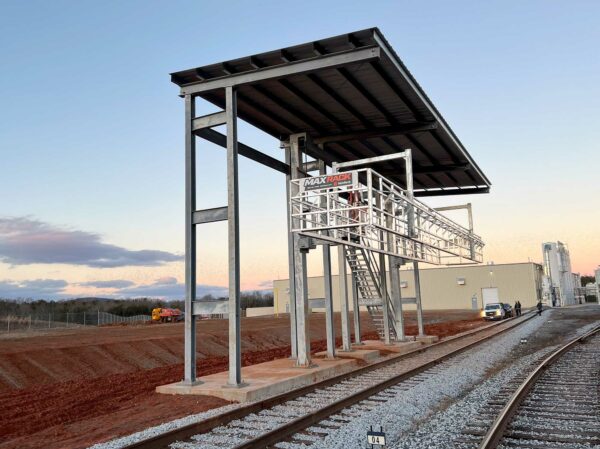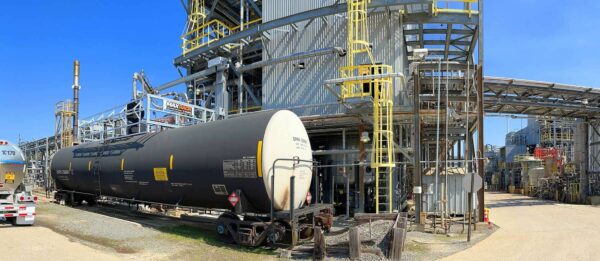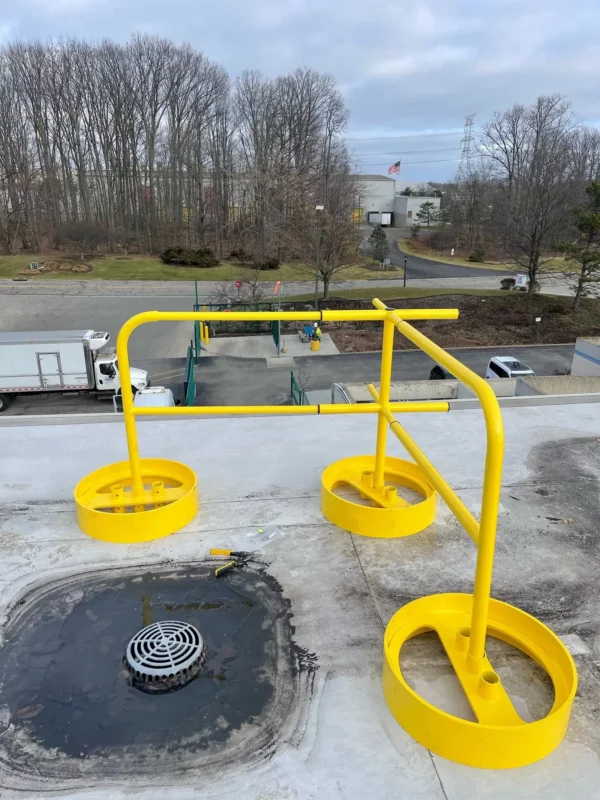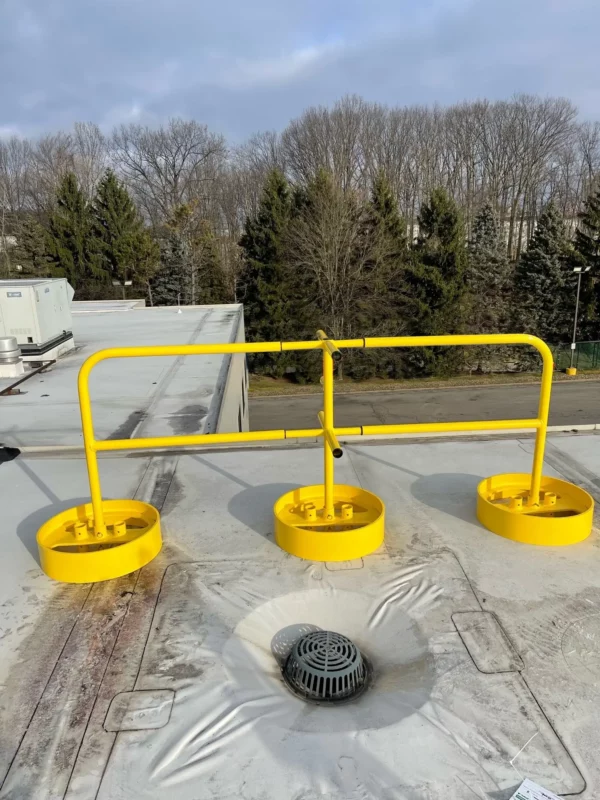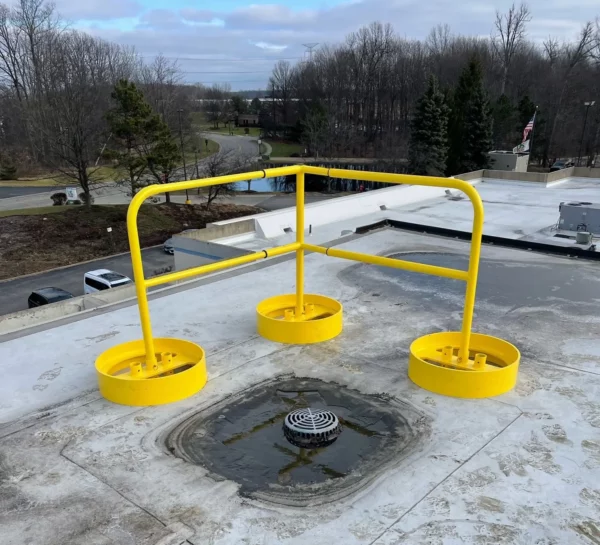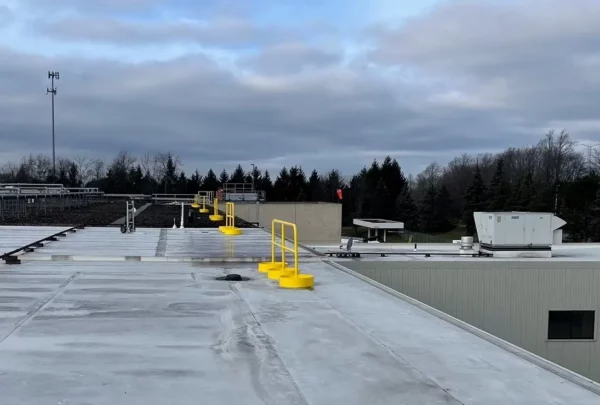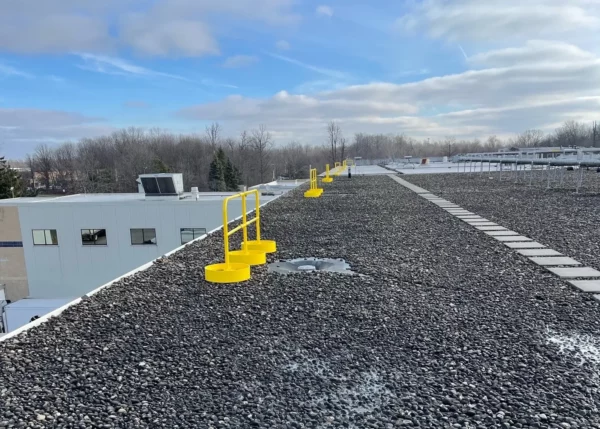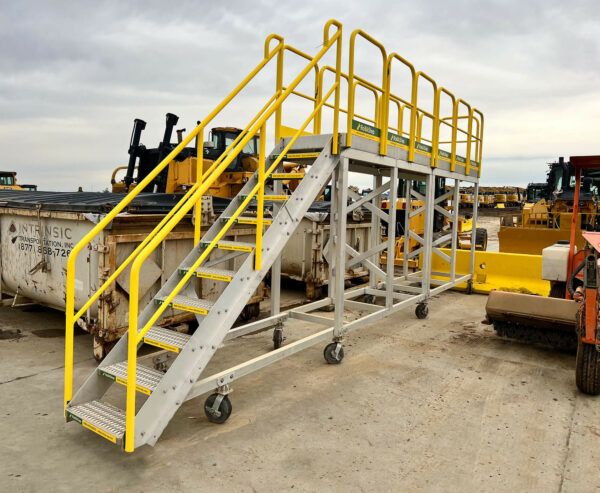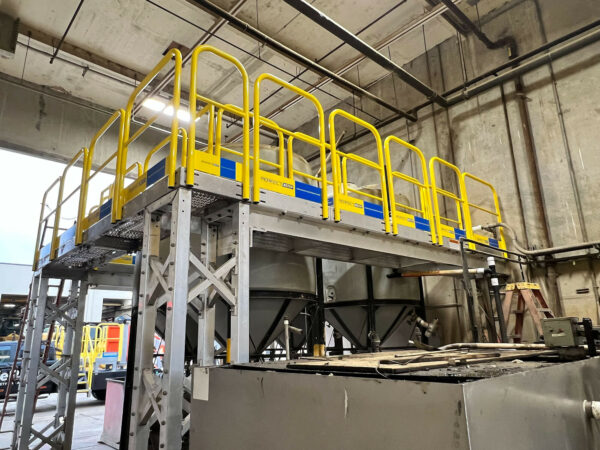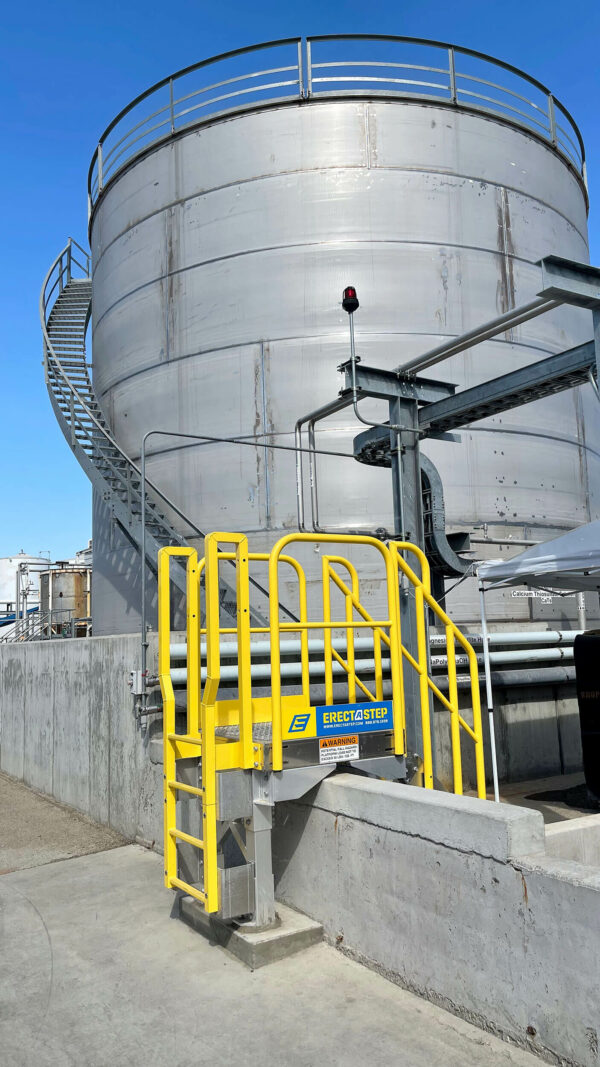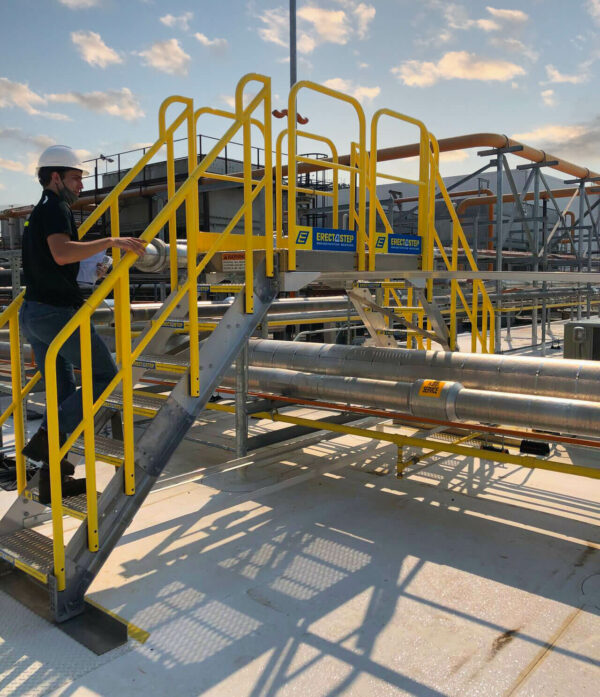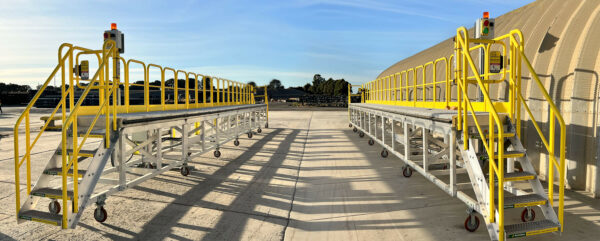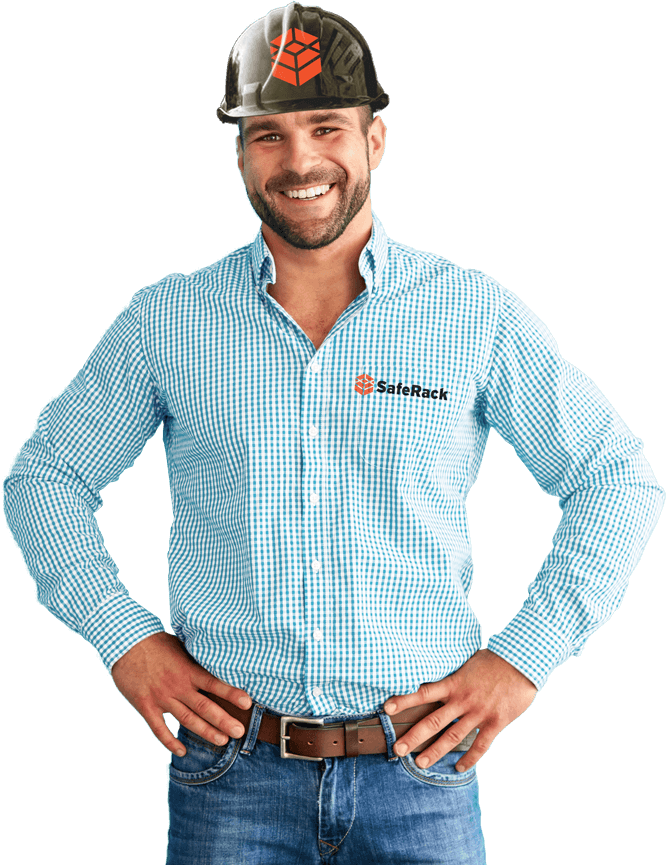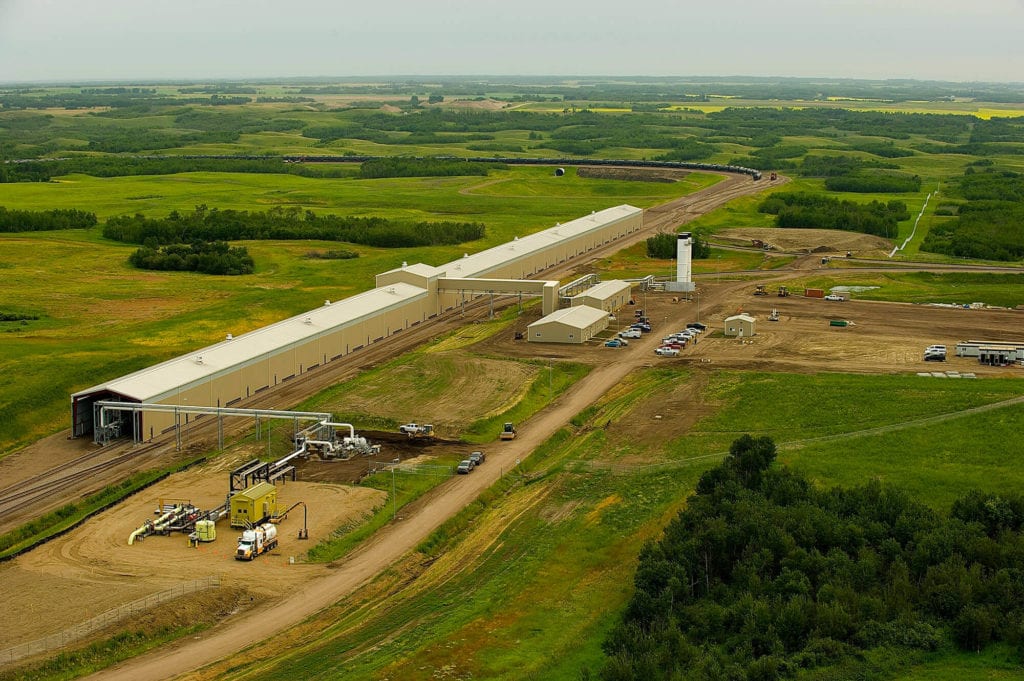Get a quote, configure a custom safety solution or ask a question. We're here to help!
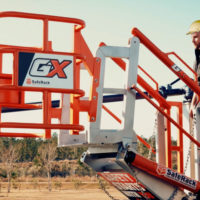
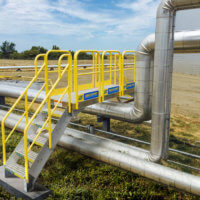
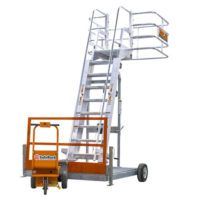
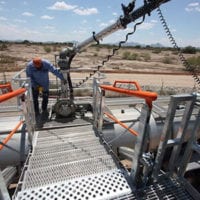
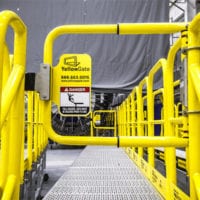
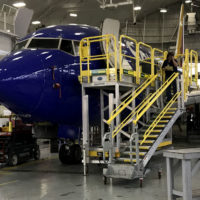
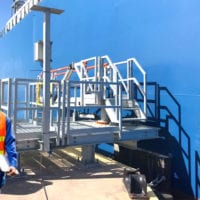

- Spill ContainmentMore …Loading Safety CagesMore …
SafeRack Worldwide
We pride ourselves on one-on-one customer service. When you call SafeRack, we'll be there to answer your questions with a combined experience of 400+ years.
Select your region below.- View Products
- Railcar & Truck Loading Platforms
- Gangways & Loading Ramps
- Stairs, Platforms & Ladders
- Mobile Ladders & Platforms
- Loading Arms & Fluid Transfer
- Safety Gates & Traffic Control
- Aviation & Aerospace Access
- Marine Access & Loading
- Grounding & Monitoring
- Spill Containment
- Loading Safety Cages
- Transloaders & Skids
- Shelters & Canopies
- Fall Protection
- Terminal & Speciality
Home / Industries / Bulk Chemical Loading / Molten Sulphur Loading and UnloadingMolten Sulfur Handling Design, Loading, and Installation.
What is Molten Sulphur? MoltenSulfur is a pale yellow, crystalline (sand-like) solid that is odorless when pure or may have a faint “rotten egg” odor. Sulfur is often transported in a molten state that is an amber-colored liquid. It is used in making Sulfuric Acid, rubbers, detergents, fungicides and fertilizers, and petroleum refining.
In the United States, molten sulfur is typically an open dome (hatch) loading operation and is loaded into trucks or railcars via steam, hot oil jacketed or heat-traced loading arms.
Personal Protective Equipment (PPE) is required to reduce potential health risks. Since operators typically have to access hatches on top of the vehicles wearing many layers of PPE during the loading process, fall prevention is essential, not only for safety but to expedite job tasks which dramatically increases throughput.


















Question, Get a Quote, Live Demo or Request an On-Site Visit
Our experts simplify the complex
View Full TextMolten Sulfur is typically transported in 15,700 gallon DOT 111A100W1 insulated tank cars and DOT MC-330 & MC-331 truck tank trailers
Molten Sulfur is transported in 15,700 gallon DOT 111A100W1 insulated tank cars that meet the DOT specification for the transportation of molten sulfur and other similar commodities. The rails cars themselves are ~ 9′ outside diameter with an overall length of 44′, with a 7’-4” x 6’ off-set crash boxes.
Railcar unloading begins by heating the railcars with steam until the molten sulfur status is achieved. This process may take anywhere from 36 to 48 hours. Once the steam and condensate lines are removed operators can commence bottom unloading, typically into an underground pit.
The key to transporting sulfur in molten form is to maintain a temperature of 284 degrees F (140 degrees C). Therefore, insulated stainless steel tank trailers with a capacity up to 3,800 gallons, are typically used to transport molten sulfur over roads and highways.
Tank truck (un)loading procedures are similar to railcar applications with the trailers meeting established DOT requirements for hauling molten sulfur. Bottom unloading is also the preferred method for unloading molten sulfur tank trucks utilizing a 3” chemical hose or insulated bottom unloading arm with a cam and groove fitting.
Your Project
Typically, as a starting point, we will need to know answers to these questions for your project
- The Railcar connection locations need flexibility – Do you know what the breadbasket connections look like?
- Are you using liquid and vapor arms/hose as two separate devices or a piggyback arm?
- Is the loading station indoors or outdoors?
- Is the loading area temperature controlled?
- How are you going to spot your railcars
Our highly trained technical sales team will undertake a detailed site survey prior to undertaking any work to check and clarify all dimensions, obstructions, access issues and other salient points. Our challenge is to provide the safest working environment – protecting operators and the equipment – while simultaneously enabling you to improve throughput and productivity.
Your Project Needs
Whether you are looking for a turn-key installation, on-site supervision or a maintenance program, SafeRack is positioned to assist you. We can do as little or as much as you need. Our project management and supervision team is the best in the business at supporting your company’s needs.
- Collaborative Design – Our loading platform specialists will work with you one on one, if you design to design the best loading solution for your specific needs
- Contract review – drawings and associated documents relating to the contract prior to site arrival
- Risk Assessment – Undertaking a site risk assessment
- Shipment Inspection – Detection of any shipping damage or abnormalities
- Material Receiving – Supervised off-loading and transport at site
- Installation Management – Supervised Installations and Coordination
- Start-up & Commissioning – On-site training for both users and maintenance personnel
Loading Arms
Generally speaking, SafeRack recommends rigid pipe loading arms where possible for the following reasons:
- Balanced throughout their movement envelope
- Designed not to hit the ground – protecting the asset and the operator
- Ergonomic – one man operation
- Fitted with manual or actuated valves.
- Fitted with optional purge/vent facilities
- Can be moved into position with ease and left hanging in the air while the operator prepares the tanker connection
- Parked neatly
Hoses require:
- Annual pressure test
- Are difficult to stow neatly when not in use
- Can be dropped
- Can be driven over
- Are very heavy to use if fitted with a valve at the tanker connection point
- Cannot be easily heated or have vent/purge valves fitted to it
- Prone to catastrophic failure
Typical Molten Sulphur Loading Platform
Quote or discuss your installation.
Start by selecting loading application"*" indicates required fields
Below are some of the loading and unloading solutions for illustrative purposes only. Our experts will work with you and your team for a custom solution to suit your needs.
Molten Sulphur Loading Arms

Molten Sulphur is typically an open dome (splash fill) loading process into railcars and tank trucks via steam jacketed, oil jacketed, or heat traced carbon steel loading arms. The loading arms will generally be insulated and clad either before or after install. Railcar loading will use a similar setup as trucks but with a 4” arm as higher flow rates must be obtained to load the higher capacity vehicles at an acceptable rate. Remember that a 4” loading arm will have a 6” jacket, so will be a heavy unit, which is why operators may consider a powered operation.
The loading arm’s layout for molten sulfur will ensure that it is self-draining after use as to completely evacuate product when the arm is stored to reduce any product retainage, which will harden and potentially clog the arm when the sulfur cools.
Safety options such as high-level sensors/probes can be added to the arm to switch off loading should the level hit a predetermined height in the vehicles. In addition, you may see a need to have temperature sensors mounted at different points on the arm to ensure constant temperatures are maintained.
Example of gravity fed top loading:

Molten Sulphur Un-Loading Arms

Molten sulfur tank cars are typically bottom unloaded directly into underground pits or insulated storage tanks. Over the road trailers are typically bottom unloaded from the rear of the truck using either a stainless steel flex hose or a 3” jacketed or heat traced, ANSI 150 lb. rated carbon steel loading arm. The arm itself will be fitted to a support standpost and will be self-draining in design. We would also recommend that the arm be fitted with a parking latch and parking sensor to ensure that the arm is stored in a safe place when not in operation.


Molten Sulphur Gangways and Safety Cages

Since molten sulfur rail cars can have off-set crash boxes SafeRack recommends a wider telescoping access gangway (48″-60″ is preferable) as it helps improve access and egress to and from the railcar. In addition, a wider gangway will reduce the risk of the operator’s PPE getting caught, torn or damaged, and will improve productivity and safety. Powered gangway solutions are also an option, with both hydraulic and pneumatic solutions being commonly used. Each gangway will be fitted with a two-rail safety cage for the railcar crash box. This will be a center 6’ x 7-6”’ safety cage to sit directly over the cashbox; and will provide a safe, secure work environment for your operator when accessing hatches on railcars.
For tank truck applications (loading or unloading) SafeRack’s standard 24” wide Self-Adjusting (SAS) gangway with a deeper 4’x6’x4-rail safety cage would be the preferred solution.

SafeRack’s GX SAS gangways use Retractalok power-assist technology allowing operators to raise or lower effortlessly, light as a feather to lift, and solid as a rock. Tested in the most critical applications, this revolutionary new gangway outperforms all others. Available in multiple lengths and widths.
Learn MoreMAXRack Elevating Safety Cage
 As an alternative to our two and four-rail safety cages, some customers prefer our MAXRack elevating safety cages. The ultimate fall prevention solution engineered to keep operators safe and productive. Designed for both trucks or railcars, and available in multiple cage lengths and widths. Safe, durable, and easy to use. MAXRack is built rock-solid with galvanized steel column supports and lifting arms (cages can be Aluminum, Galvanized, or Stainless Steel depending on application) Available in two power options – Pneumatic Air Drive and Electric Drive (Explosion and Non-Explosion Proof).
As an alternative to our two and four-rail safety cages, some customers prefer our MAXRack elevating safety cages. The ultimate fall prevention solution engineered to keep operators safe and productive. Designed for both trucks or railcars, and available in multiple cage lengths and widths. Safe, durable, and easy to use. MAXRack is built rock-solid with galvanized steel column supports and lifting arms (cages can be Aluminum, Galvanized, or Stainless Steel depending on application) Available in two power options – Pneumatic Air Drive and Electric Drive (Explosion and Non-Explosion Proof).
Learn MoreEye Wash/Drench Showers

ANSI guidelines state that an Eye Wash/Drench Showers need to be located 10 seconds or 55’ (16.8m) from contaminants or hazardous materials. Eyewash stations need to be on the same horizontal plane with no obstructions.
Therefore, we would propose the installation of a standard combination Drench Shower/Eyewash Unit, which will save limited space and fit easily into any work
Molten Sulphur Spill Containment

Spill containment pans will be provided at the point of loading operations and is an essential piece of equipment in overall site safety and environmental protection Molten Sulphur Grounding

Molten Sulphur is highly flammable, and industry best practice includes the grounding of all vessels before starting the (un)loading process. - Vehicle grounding and bonding — ensure true grounding before product flow is permitted
- Explosion-proof enclosures — meet or exceed UL, CSA, and Ex requirements
Safety Gates

Safety Gates will be installed at the top of the stairs and any other openings to ensure operator safety at all times.  YellowGate Safety Gates
YellowGate Safety GatesSafeRack’s line of industrial safety gates is the most flexible product on the market with the ability to span openings between 16” and 36” and is field adjustable with nothing more than a wrench. Learn More
Molten Sulphur Options

- Lighting – Lighting both over and under the platform will be provided. For overcast days or second shifts, lighting is essential for improved safety and improved productivity.
- Platform & Canopies – Full platform canopies reduce exposure to the elements and improve the safe and productive loading operation from the operator’s perspective.
- Operator Shelter – Depending on your site requirements, consideration should be given to the requirement of an operator or guard building on the loading platform. This can be customized to meet specific site requirements
- Wheel Chocks – Railcar Wheel Chocks provide fast blocking of all types of railcars and meet OSHA regulations to safely prevent railroad cars from moving during loading or unloading operations. This is a requirement by the Department of Homeland Security
Personal Protective Equipment PPE Requirements
Eye/Face Protection: Wear chemical safety goggles. A face shield (with safety goggles) may also be necessary. As well as a respirator, especially when opening or closing hatches
Skin Protection: Wear chemical protective clothing e.g. gloves, aprons, boots. Coveralls or long sleeve shirts and pants in some operations. Wear a chemical protective, full-body encapsulating suit, and self-contained breathing apparatus (SCBA). Suitable materials include; butyl rubber, neoprene rubber, Viton®, Viton®/butyl rubber, Barrier® – PE/PA/PE, Silver Shield® – PE/EVAL/PE, Trellchem® HPS, Trellchem® VPS, Saranex®™, Tychem® BR/LV, Tychem® Responder® CSM, Tychem® TK. The following materials should NOT be used: natural rubber, polyvinyl chloride. Recommendations are NOT valid for very thin neoprene rubber gloves (0.3 mm or less).
Respiratory Protection: Up to 5 ppm:
(APF = 10) Any chemical cartridge respirator with cartridge(s) providing protection against Molten Sulphur*; or Any supplied-air respirator*.
*Reported to cause eye irritation or damage; may require eye protection.
APF = Assigned Protection Factor
Recommendations apply only to National Institute for Occupational Safety and Health (NIOSH) approved respirators. Refer to the NIOSH pocket guide to chemical hazards for more information.
Molten Sulphur 101
Things to know about Molten Sulphur
Molten Sulphur is regulated by the U.S. Department of Transportation (DOT) and is classified as a hazardous material, with the DOT identification number UN 2448
Typical work areas include hot steam piping, condensate lines, air compressors etc. Steam and condensate present two significant hazards: pressure and heat. Steam will normally be 30 – 70 psi @ 300 degrees F and condensate up to 70 psi and 200 to 300 degrees F.
Molten Sulphur will flow and emit large quantities of sulphur dioxide, a toxic, irritating, and suffocating gas that can cause severe lung damage and death. Molten Sulphur may evolve into hydrogen sulphide (H2S) – H2S is a flammable gas and may present an explosion hazard in confined spaces.
In addition to standard recommended PPE, a positive pressure air supplied respirator is strongly recommended when opening manway covers (hatches) and bottom outlet valves.
Loading molten sulphur into trucks and railcars can be challenging as any cold spots in the loading arm must be minimized in order to eliminate the risk of the product hardening within the arm. Fully steam-jacketing or heat tracing is recommended to provide even heating distribution throughout the loading arm for trouble free loading.


Customer Reviews
 5 5Easy to maneuver and operate.
5 5Easy to maneuver and operate.I would recommend the SafeRack MAUI for trucks – it’s easy to maneuver and operate.
By Jerry Crowder from Kinder Morgan on 6/1/114 54-day delivery!I ordered on Friday, late in the day. It arrived Tuesday!!
By Karen Cartwright from Karen Cartwright on 7/2/124 5The system is a safe means of loading our trucks.Travis McCraine was very responsive. The system is a safe means of loading our trucks. I’d recommend it.
By Stacey Hoover from CMS Land on 2/13/12 5 5Reasonable prices, customizable, easy to assemble and install.
5 5Reasonable prices, customizable, easy to assemble and install.Reasonable prices, customizable, easy to assemble and install.
By Brandon Trochta from NuStar Logistics, LP on 6/26/16 5 5ErectaStep Work Platform
5 5ErectaStep Work PlatformWe are Extremely Satisfied with SafeRack!
By Booker Stuart from Shell Chemical Company on 5/7/21 5 5The spill containment is great and will work the best for what we are doing.
5 5The spill containment is great and will work the best for what we are doing.The customer service was great. I got to talk to someone in the area and we were able to be understood. The spill containment is great and will work the best for what we are doing.
By Mike Wickersheim from Sentinel Transporation, LLC on 11/7/12
Is your plant or facility compliant with ANSI, OSHA, and local safety codes? We can help!


EMERGENCY EYEWASHES / SHOWER EQUIPMENT AND THE ANSI/ISEA Z358.1 – 2014 STANDARD
Following eye contact, you must start washing with water immediately to prevent permanent damage. In the event of skin contact, you must start washing with water immediately to prevent slow-healing chemical burns.
Are you aware that ANSI guidelines state that Eye Wash/Drench Showers need to be located 10 seconds or 55′ from contaminates or hazardous materials and located on the same horizontal plane, with no obstructions? If bottom loading/unloading, an additional shower should be located at grade as well. SafeRack provides the above equipment plus much more needed to keep employees safe and expedite bulk chemical loading and unloading.
OSHA Regulation Experts – Does your existing chemical safety equipment or chemical loading systems meet OSHA’s latest requirements? SafeRack’s professional technical sales consultants are available to meet with your team to make recommendations to keep your facility in front of OSHA’s ever-changing country and region-specific standards and regulations, including lifeline and trolley beam fall arrest systems, metal stairs, and access platforms.
Why SafeRack?
The SafeRack approach is a collaborative one. Let’s call it The SafeRack Way. We have, over many years amassed a great deal of experience and understanding of the safety aspects involved in loading road tankers and railcars, as well as the behavioral habits of the operators.

Experts In Chemical Loading
- Acetic Acid
- Acetic Anhydride
- Acetonitrile
- Acrolein
- Acrylic Acid
- Acrylonitrile
- Aluminum Chloride
- Aluminum Sulfate
- Ammonia
- Ammonium Hydroxide
- Ammonium Nitrate
- Aniline
- Benzene
- Benzyl Chloride
- Bromotrifluoromethane
- Butadiene
- Carbon Dioxide
- Caustic
- Chlorine
- Chloroform
- Chlorosulfonic Acid
- DEF (Diesel Exhaust Fluid)
- Diethylene Glycol
- Dimethylformamide
- Dodecylbenzene Sulfonic Acid
- Ethanol
- Ethyl Acetate
- Ethyl Chloride
- Ethylene
- Ethylene Dichloride
- Ethylene Glycol
- Ethylene Oxide
- Ferric Chloride
- Ferrous Chloride
- Hexane
- Hydrochloric Acid
- Hydrofluoric Acid
- Hydrofluorosilicic Acid
- Hydrogen Cyanide
- Hydrogen Peroxide
- Hydrofluoric Acid
- Hypochlorous Acid
- Isopropyl Acetate
- Liquid Argon
- Liquid Nitrogen
- Liquid Oxygen
- Maleic Anhydride
- MDI
- Methanol
- Methyl Chloride
- Methyl Ethyl Ketone
- Methyl Methacrylate
- Methyl Isocyanate
- Molten Sulphur
- Nitric Acid
- Oleum
- Phenol
- Phosphoric Acid
- Phosphorus Oxychloride
- Phosphorus Trichloride
- Polypropylene
- Renewable Diesel
- Sodium Cyanide
- Sodium Hydroxide
- Sodium Hypochlorite
- Styrene Monomer
- Sulfuric Acid
- Sulfur Dioxide
- Titanium Tetrachloride
- Toluene
- Toluene Diisocyanate
- Turpenitne
- UAN (Urea Ammonium Nitrate)
- UREA
- Vinyl Acetate
- Vinyl Chloride
- Xylene
- Zinc Chloride
- Agro-Chemical
- Specialty Chemical
- Petrochemical

North America’s largest loading terminal
World-leading designer, manufacturer, and installer of truck and railcar loading platforms
As one of the primary railcar loading points, Hardisty is one of the major crude oil hubs in North America and a major origination point of pipelines that export to the United States. SCS was asked to supply and construct a SafeRack crude oil loadout terminal spanning nearly half a mile. The USD Hardisty terminal can load up to two 120-railcar unit trains per day and consists of a fixed loading rack with 62 railcar loading positions enclosed, separate control, operator, and mechanical buildings, as well as a unit train staging area and loop tracks capable of holding multiple unit trains simultaneously. SCS also supplied and installed boom-supported loading arms with supply and vapor management systems.

Quick Quote 866-761-7225
LET US DESIGN YOUR SOLUTION TODAY
Our innovative tools provide 3D visualizations and accurate quotes in minutes.
Get Help NowOrder Now 866-761-7225
Questions or Need a Quote?
Chat live with a knowledgeable and friendly safety expert now.

Bob Kashtan
Located in South Carolina

Joey Robinson
Located in South Carolina

Caelin Lacy
Located in South Carolina

Katie Kelly
Located in South Carolina

Amber Graham
Located in South Carolina



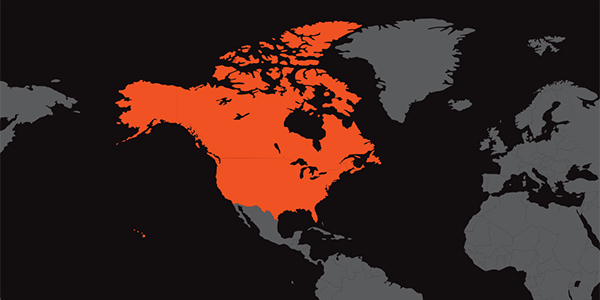








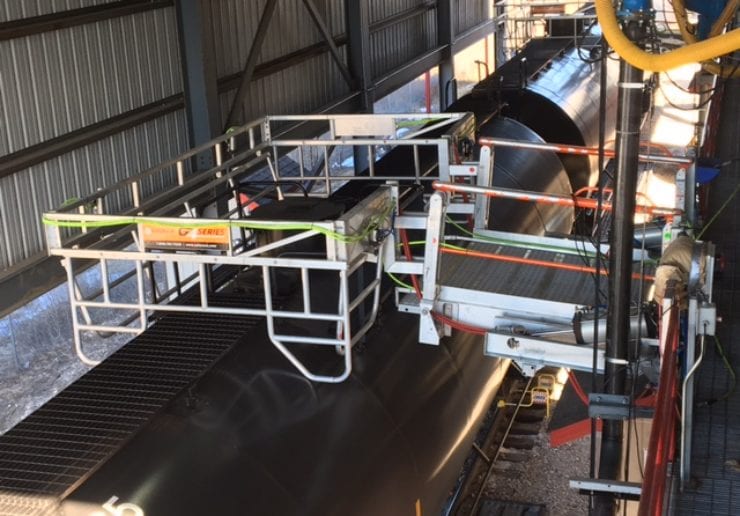
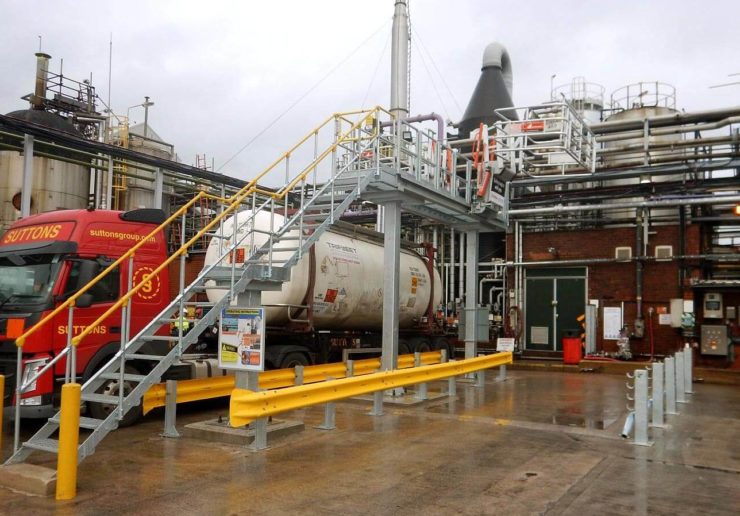
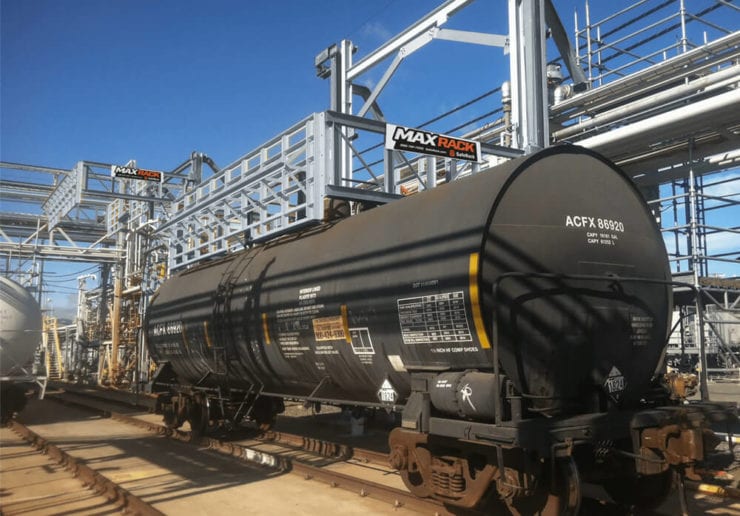
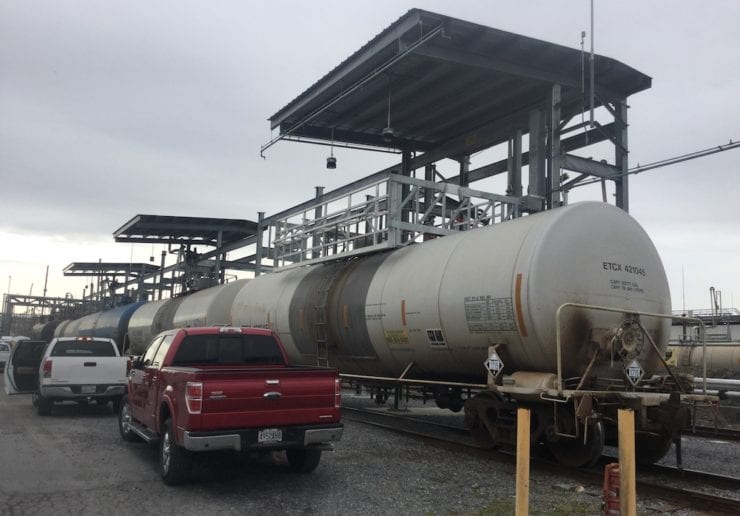

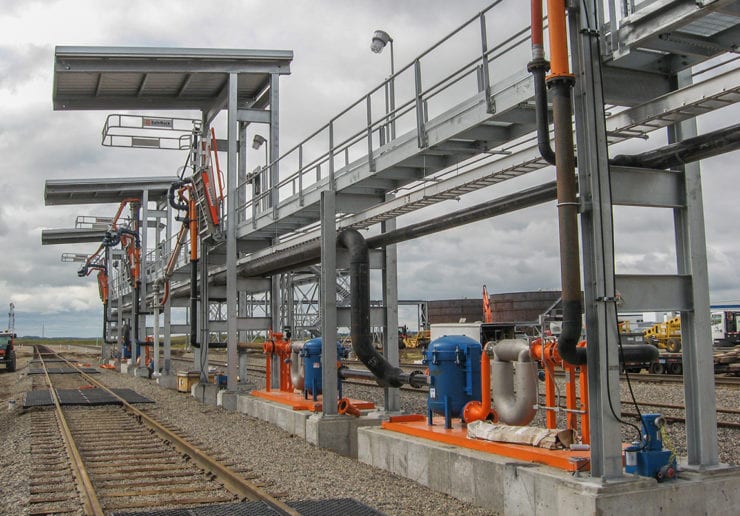
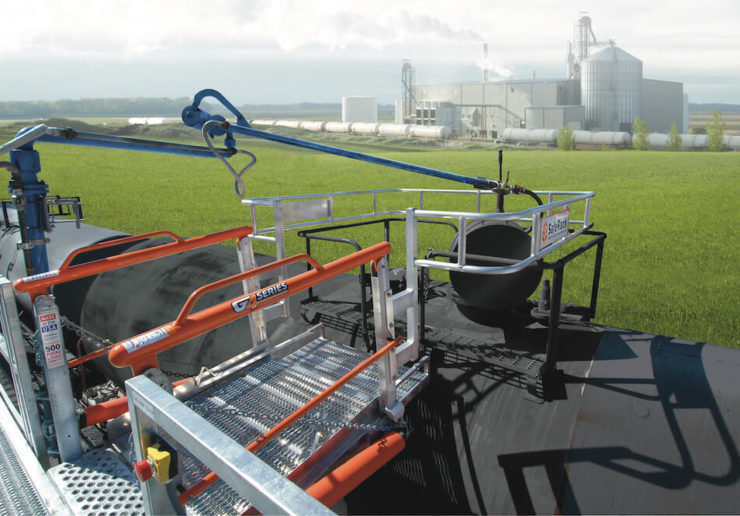
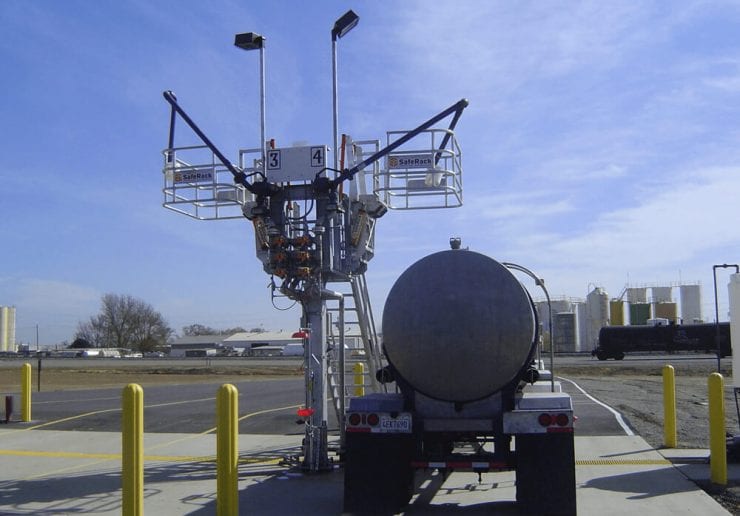
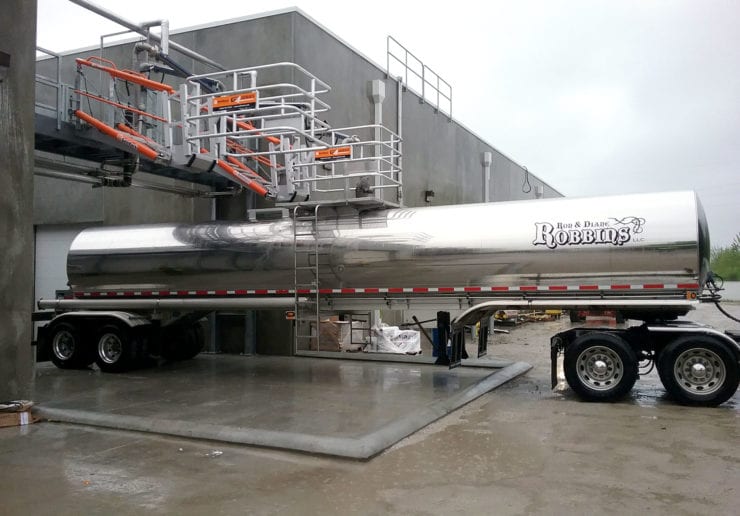
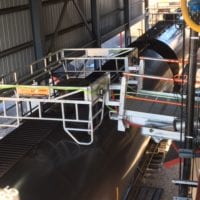
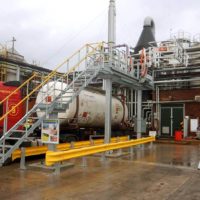
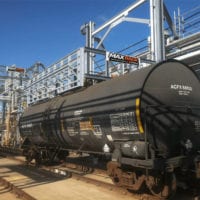
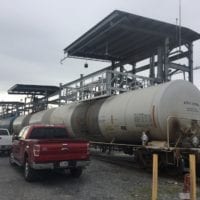
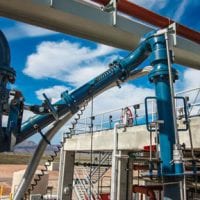
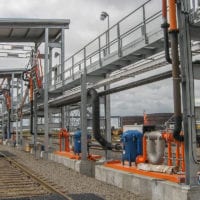
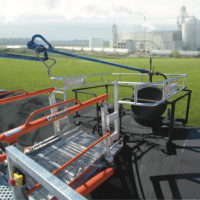
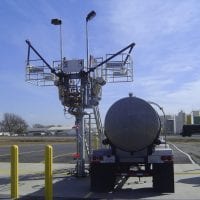
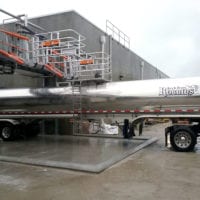

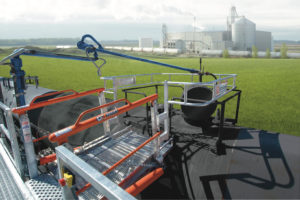




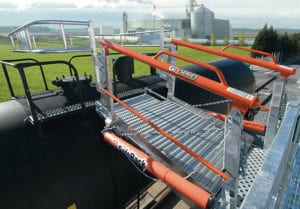
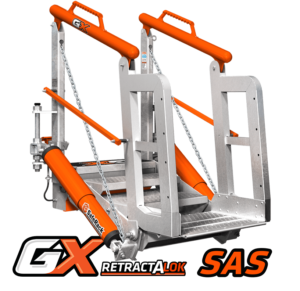
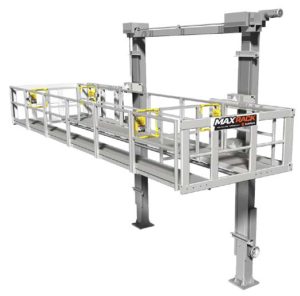 As an alternative to our two and four-rail safety cages, some customers prefer our MAXRack elevating safety cages. The ultimate fall prevention solution engineered to keep operators safe and productive. Designed for both trucks or railcars, and available in multiple cage lengths and widths. Safe, durable, and easy to use. MAXRack is built rock-solid with galvanized steel column supports and lifting arms (cages can be Aluminum, Galvanized, or Stainless Steel depending on application) Available in two power options – Pneumatic Air Drive and Electric Drive (Explosion and Non-Explosion Proof).
As an alternative to our two and four-rail safety cages, some customers prefer our MAXRack elevating safety cages. The ultimate fall prevention solution engineered to keep operators safe and productive. Designed for both trucks or railcars, and available in multiple cage lengths and widths. Safe, durable, and easy to use. MAXRack is built rock-solid with galvanized steel column supports and lifting arms (cages can be Aluminum, Galvanized, or Stainless Steel depending on application) Available in two power options – Pneumatic Air Drive and Electric Drive (Explosion and Non-Explosion Proof).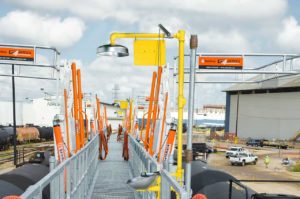

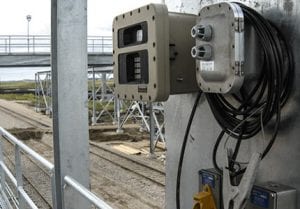
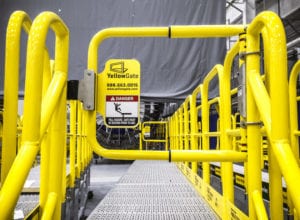
 YellowGate Safety Gates
YellowGate Safety Gates







